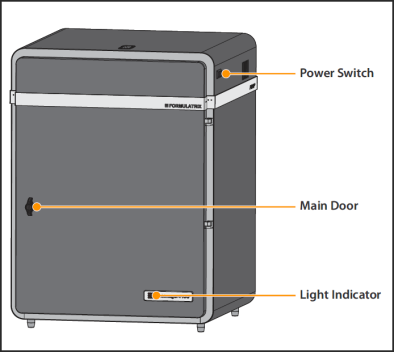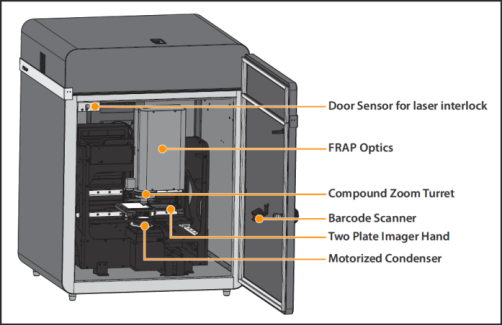
FRAP (Florescence Recovery After Photobleaching) imaging is used for membrane protein (GPCR Family) crystallization. It is used to determine membrane protein mobility in lipids. This topic reviews the internal and external components of FRAP Benchtop. If you would like to read about how to use FRAP, please see the FRAP tutorials.

FRAP External Components
A switch that turns FRAP on and off.
The door to FRAP is secured with a hex key locking mechanism. When you place a plate into or remove a plate from the FRAP imager, you must open the door. Be sure to close it securely.
The FRAP barcode lights up during operation to notify you that FRAP imaging is taking place. Do not open the door under any circumstances during FRAP imaging.

FRAP Internal Components
For safety, the laser will automatically turn off when the door is opened.
The entire FRAP optics (i.e. bleaching laser, fluorescence light source, and CCD camera) has a footprint of only 15 cm x 27 cm.
Multiple objectives are available for use providing a large field of view with an option to zoom into areas of interest. FRAP comes standard with two objectives (1.1x and 5.5x).
Identifies plate information allowing for automated imaging and storing of images for your specific experiment.
FRAP can accomodate up to 2 SBS footprint plates.
A Köhler light source with a motorized condenser provides high contrast images with no sample heating and reliable drop location.

|
|
| RIC-V34R017 |